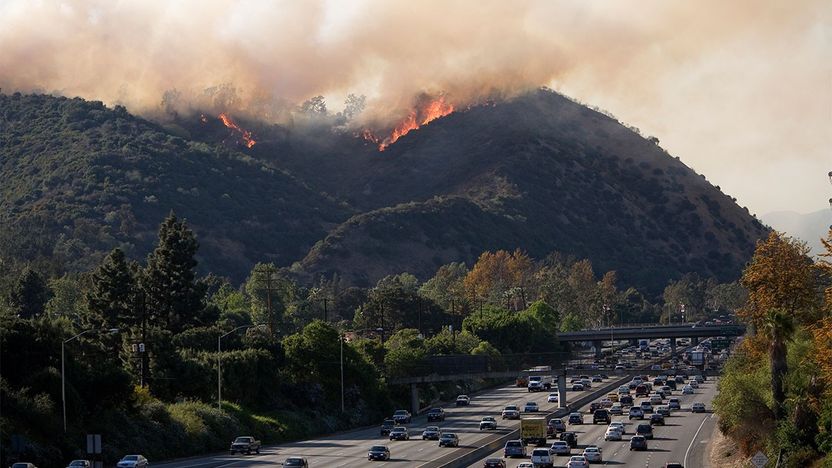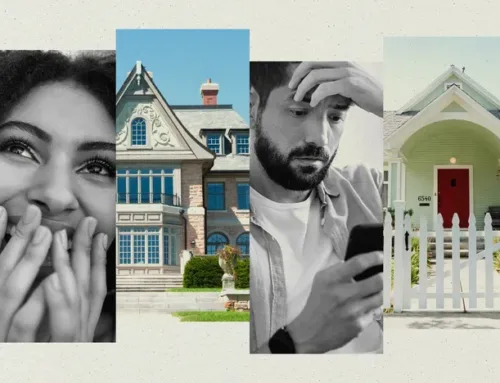Aug 11, 2022

The threat of wildfires is a dangerous reality in rural and more populous areas alike. And while homebuyers likely know the risk of settling down in a fire-prone area, many may not have a choice.
An estimated 4.5 million homes in the U.S. are located in places with high or extremely high wildfire risk. And half of all addresses in the lower 48 states face some degree of wildfire risk, according to data from First Street Foundation, a nonprofit research group in New York.
“Living in a fire-prone area carries risk, but there are many steps you can take to minimize the risk,” says Scott Berens, a real estate investor and owner of Balsamo Homes in Westlake Village, CA.
f your home search has taken you to an area where wildfires are an unavoidable hazard, here’s how to assess and offset the likelihood that a fire will affect your property.
Look at risk maps
The first step homebuyers should take is to assess a community’s general fire risk.
The First Street Foundation has created a first-of-its-kind tool for homeowners who want to assess fire risk now, and in the future, as the climate gets hotter. You simply enter a home’s address, and it tells you the property’s flood and fire risks over the next 30 years. (“Risk” is calculated as the probability of wildfire reaching the building.) The tool is also available on all Realtor.com® listings.
Fire maps from the U.S. Forest Service are helpful for looking at historical data for regional risks, but it’s not possible to zero in on specific homes.
Seek out building codes
After looking online, you should also see if the community you’re looking in assesses zones for fire risk by building codes.
“There are certain areas within a city, county, or other municipality that are classified as fire zones by the building codes,” says Nate Johnson, a real estate investment expert who works in product management at NeighborWho in Pearland, TX. “The codes determine how much risk exists based on factors such as density, land use—farm versus timber—and existing construction in the area. Real estate agents, particularly those in fire-prone areas, should also be able to provide you with information about the designation of a home.”
If you’re looking in California, you’re in luck because it is the only state in the union with a statewide building code.
Prioritize fire-resistant building materials
What is the home built with?
“A home’s building materials can make a huge difference in whether it survives a wildfire,” Johnson says. “The roof is especially vulnerable to fires since flying embers can land there and ignite. Should a potential buyer buy a house with a wood-shake roof, they should understand that changing the roof should be a top priority.”
Vinyl siding should also be avoided because it melts in a fire. Metal, tile, and fire-resistant composite shingles are excellent materials to look for.
Fire-proof your outside space
If you do end up buying a home in a fire-prone area, create fire breaks around the property.
Berens recommends clearing brush, trimming bushes and trees, making sure the gutters are clean, and maintaining a defensible space around your property.
Swimming pools are also efficient ways to hold off fires, especially if they’re in-ground. If you want to move to an especially fire-prone area, make sure you and the fire department have easy access to water to put out the fire.
The pool comes in handy as a water source, too.
“It’s a great firebreak and a quick water source that can assist in the event of a fire,” says David Snyder, founder and CEO at Nova Home Buyers in Charlotte, NC.
Get insurance, but read the fine print
A good home insurance policy is a no-brainer for everyone, but buyers in fire-prone regions should review the fine print carefully.
“If you are looking to buy a home in a fire-prone area, there are some important things to consider to protect yourself when it comes to insurance,” says Kyle Mraz, agency manager with Country Financial in Denver. “It’s wise to consider the guaranteed or ‘additional replacement cost’ endorsement offered by some insurance companies. This covers the full cost to rebuild your home as it was prior to a covered loss, with no limit.”
Mraz explains that replacement cost coverage includes the cost of labor and construction materials, but doesn’t subtract for depreciation, so it’s based on today’s costs. You can choose to add additional cost coverage with no limit.
Make sure you pay careful attention to deductibles and percentage deductibles, Mraz adds. Percentage deductibles are often reserved for natural disasters like wildfires, and they constitute a percentage of your home’s insured values, generally up to 10%. That means if your home is insured for $500,000, and your deductible is 1%, you’d be responsible for $5,000 out of pocket. If you claimed $25,000 worth of damage, your policy would cover $20,000.
If you move forward and buy in a fire-prone region, do this
If you do decide that living in a fire-prone area is worth the gamble and you’re serious about both mitigating the risk and lowering the premium you pay for insurance, consider enrolling in Wildfire Prepared Home, a voluntary third-party verified program designed to meaningfully reduce the danger of fire affecting your home. (The program looks at, among other things, your home’s building materials, how clear your land is of brush, building features, and more.)
The California Bureau of Insurance and others say the standards of Wildfire Prepared Home are effective, and they are encouraging insurance companies to give homeowners who use the program a break on their premiums.
Source- https://www.realtor.com/advice/buy/buying-a-home-in-a-fire-prone-area-what-to-know/






